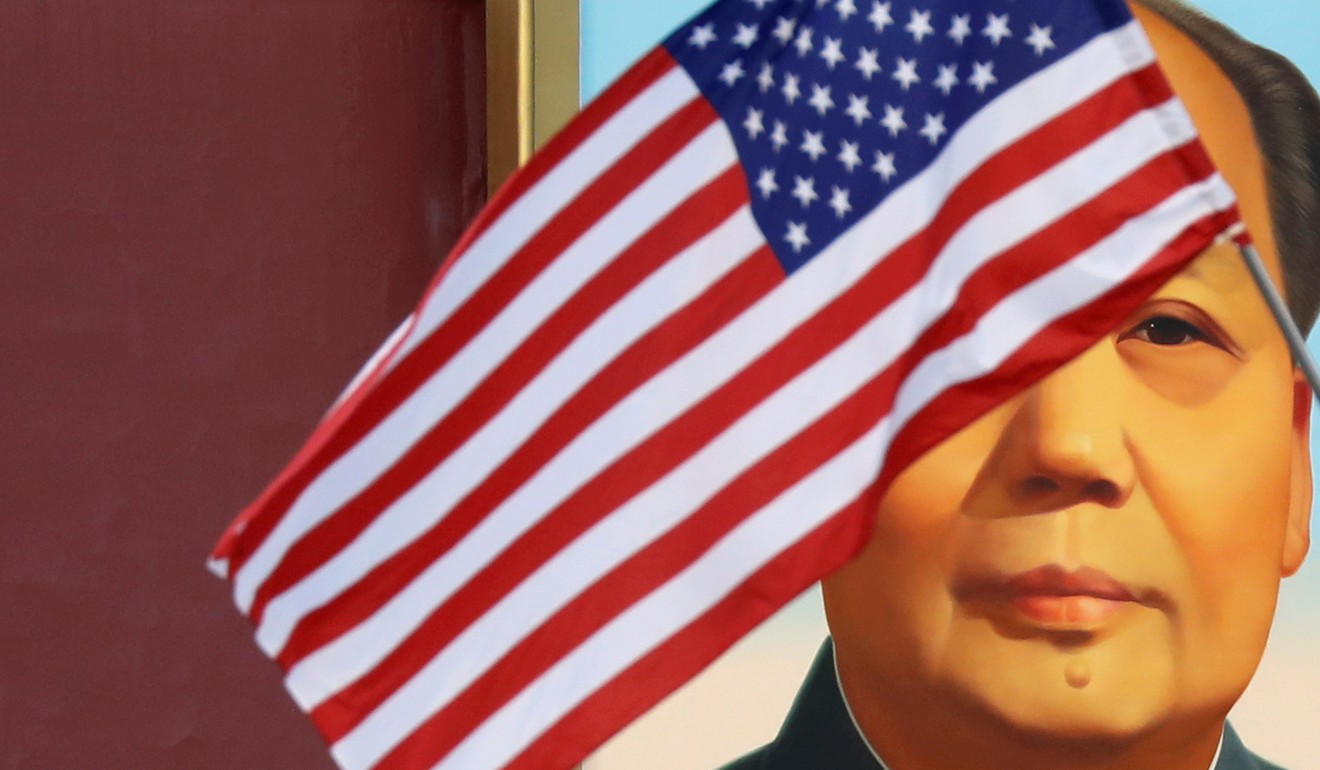
China and the United States are playing a perilous game of chicken in Asia-Pacific
- Washington and its allies are increasingly challenging Beijing’s militarisation of the South China Sea, but Richard Heydarian considers where it will all end

“It was the rise of Athens and the fear that this inspired in Sparta that made war inevitable,” the ancient Greek historian Thucydides wrote more than two millennia ago.
In many ways, we are witnessing a similar dynamic in China’s adjacent waters, as the United States and its allies seek to prevent a new “Peking order” in the Indo-Pacific. China is just too big and too important for cold war-style containment to be effective.
We are beginning to witness what the political scientist Gerald Segal termed as “constrainment”, namely a strategy that “is intended to tell China that the outside world has interests that will be defended by means of incentives for good behaviour, deterrence of bad behaviour, and punishment when deterrence fails”.
But the approach worked, he said, if and only if the US and its allies “act in a concerted fashion both to punish and to reward China”.

Beijing’s expanding military and paramilitary deployments to the so-called first island chain, which encompasses islands in the East and South China seas and the Taiwan Strait, has raised concerns over the coercive establishment of a new maritime sphere of influence.
In response, the United States is set to unveil a new “Indo-Pacific strategy”, which aims to keep China’s maritime ambitions in check. Acting US Secretary of Defence Patrick Shanahan will present the new strategy at the 2019 Shangri-La Dialogue in Singapore later this month.
US assistant secretary of defence for Indo-Pacific security affairs Randall Schriver said at a recent press conference in Kuala Lumpur that the new strategy would focus on making sure that “no one country can change international law or the status of the South China Sea, so that’s why we conduct the freedom of navigation operations and the other presence operations in the South China Sea”.
Through its expanded strategic presence in the area, Washington hoped to convince Beijing against “deploy[ing] additional military systems and in fact remove the military systems” to artificially reclaimed islands in the South China Sea, he said.

Washington seems upbeat about signing like-minded powers and allies to check China’s maritime ambitions.
“We’re joined by a lot of countries who see the potential erosion of international law as a problem not only in the South China Sea but [one that] has broader implications,” Schriver said.
On Monday, the guided-missile destroyers USS Preble and USS Chung-Hoon sailed within 12 nautical miles of China-held Gaven and Johnson reefs during so-called freedom of navigation operations in the South China Sea.
Three days later, for the first time in history, the United States, Japan, India and the Philippines conducted joint freedom of navigation exercises en route to Singapore for the second phase of the Asean Defence Ministers Meeting Plus maritime security field training exercise.
Coming from a joint exercise in Busan, South Korea, Japan’s JS Izumo and JS Murasame, India’s INS Kolkata and Shakti, and the Philippines’ BRP Andres Bonifacio joined the USS William P. Lawrence.
While the four countries have conducted bilateral and trilateral joint exercises over the years, this was the first time they had held a quadrilateral exercise of this scale.

The Philippine navy was particularly pleased with the cooperation. The head of its delegation, Roy Vincent Trinidad, said the “group sail showed the active participation of the Philippine navy as it strengthens its relationships with allies and partners in the Asia-Pacific region … [which] gives us another opportunity to learn from like-minded navies”.
Despite warming ties between Manila and Beijing, the Philippine military has quietly expanded security cooperation with the US and other traditional partners amid deepening concerns over the South China Sea disputes. Since early this year, the Philippines and China have been at loggerheads over the latter’s deployment of an armada of paramilitary forces to Thitu Island, Sandy Cay and other land features under Manila’s decades-long occupation.
Later this year, the Philippines and the US are expected to formally review their mutual defence treaty to properly respond to a new security environment. Manila is seeking greater strategic reassurance from Washington amid rising tensions with China.
The Philippines’ Defence Secretary Delfin Lorenzana told the author: “I am dead serious [about reviewing the alliance].”
The two allies may opt for new guidelines on the treaty, which would take into consideration the threats posed by China’s paramilitary forces and so-called grey zone strategy.
Last month, France, a major naval power with Indo-Pacific territories, deployed its frigate Vendemiaire to the Taiwan Strait for its own freedom of navigation operations in Indo-Pacific waters.
A French defence ministry official defended the deployment, saying: “France reaffirms its commitment to freedom of navigation in accordance with the law of the sea.”
An enraged China accused the French frigate of “illegally entering China’s territorial waters”. Beijing has also instructed the People’s Liberation Army to remain “on high alert and take all necessary measures” amid the United States’ and its allies’ expanded operations in the area.
But the progressive escalation of tensions carries huge risk for regional stability. As Harvard academic Graham Allison said: “However unimaginable conflict seems, however catastrophic the potential consequences for all actors … however economically interdependent states may be – none of these factors is sufficient to prevent war.”
Thus, it is of paramount importance for all relevant Indo-Pacific players, including Southeast Asian nations such as the Philippines, to double down on military diplomacy and engagement amid the perilous game of chicken on the high seas.
Richard Heydarian is an Asia-based academic and author of the upcoming book “The Indo-Pacific: Trump, China and the New Global Struggle for Mastery”